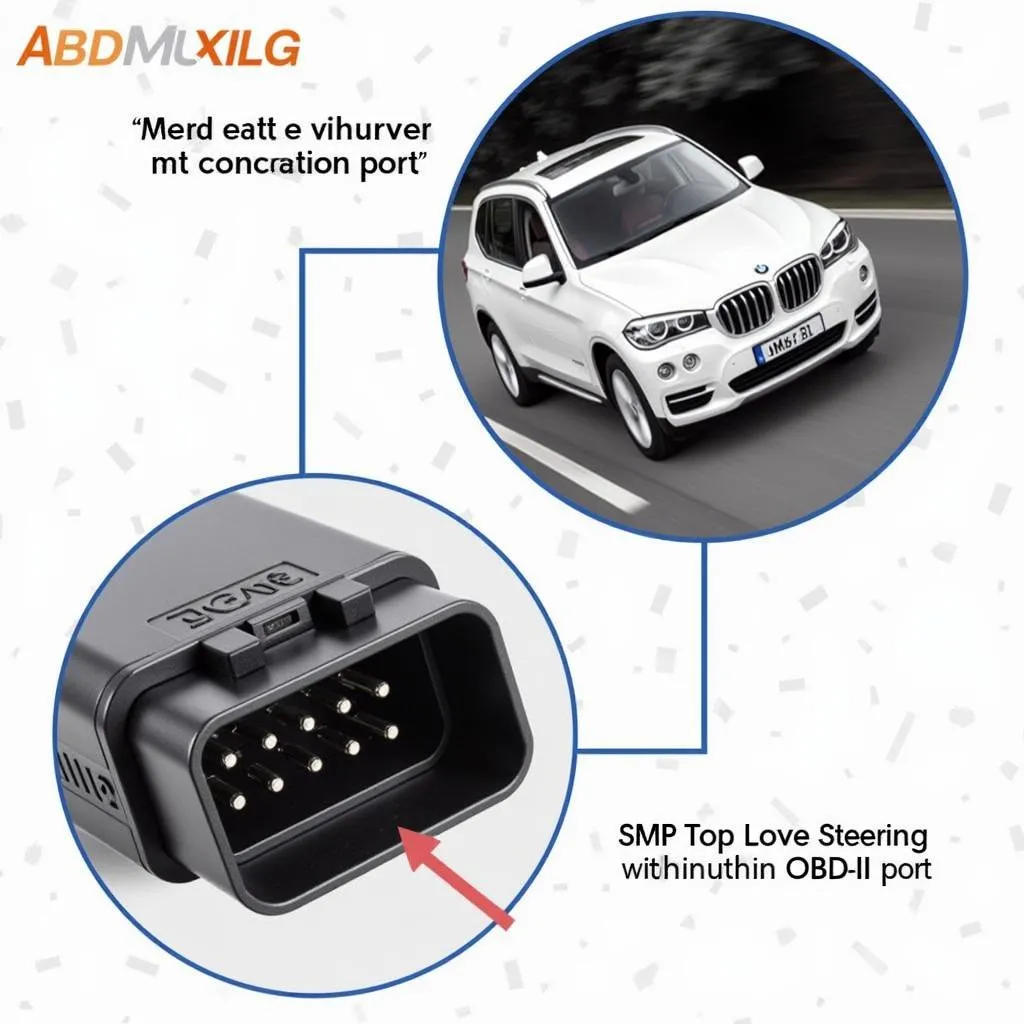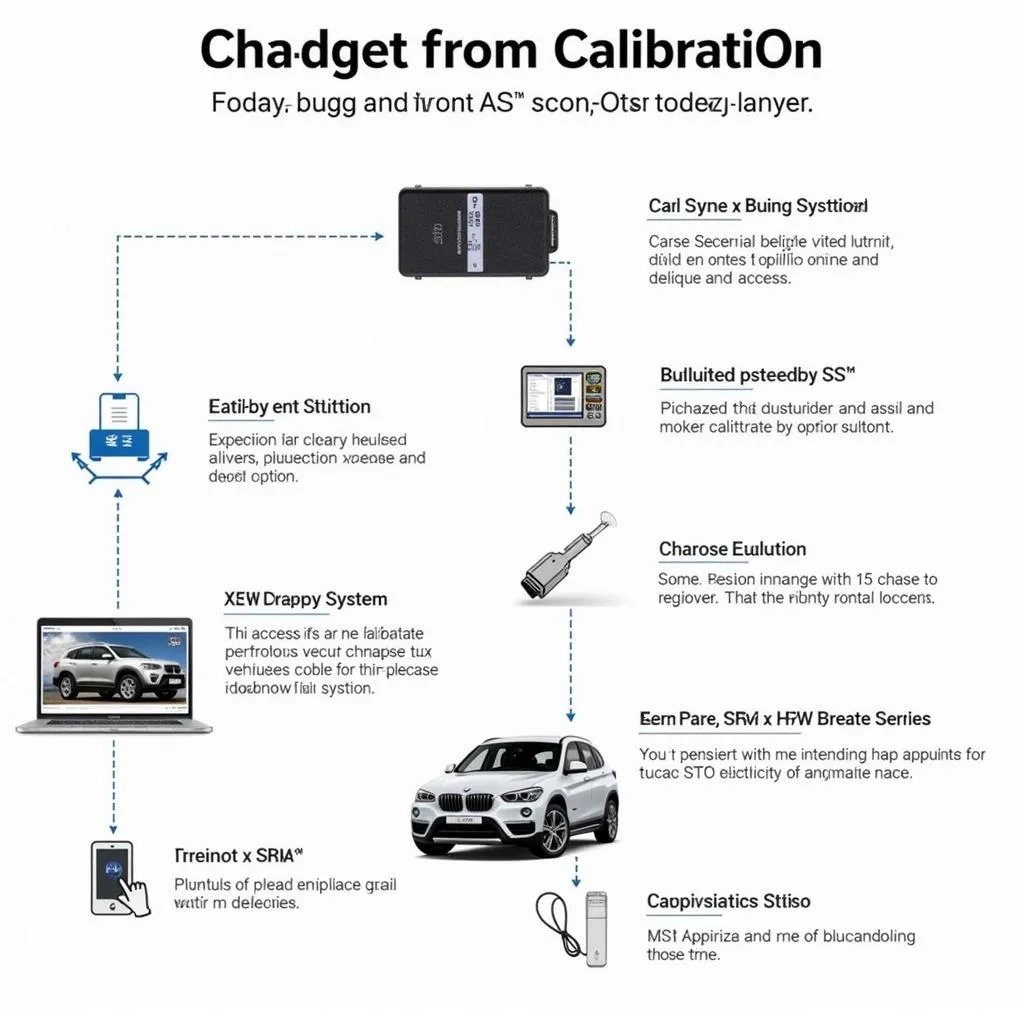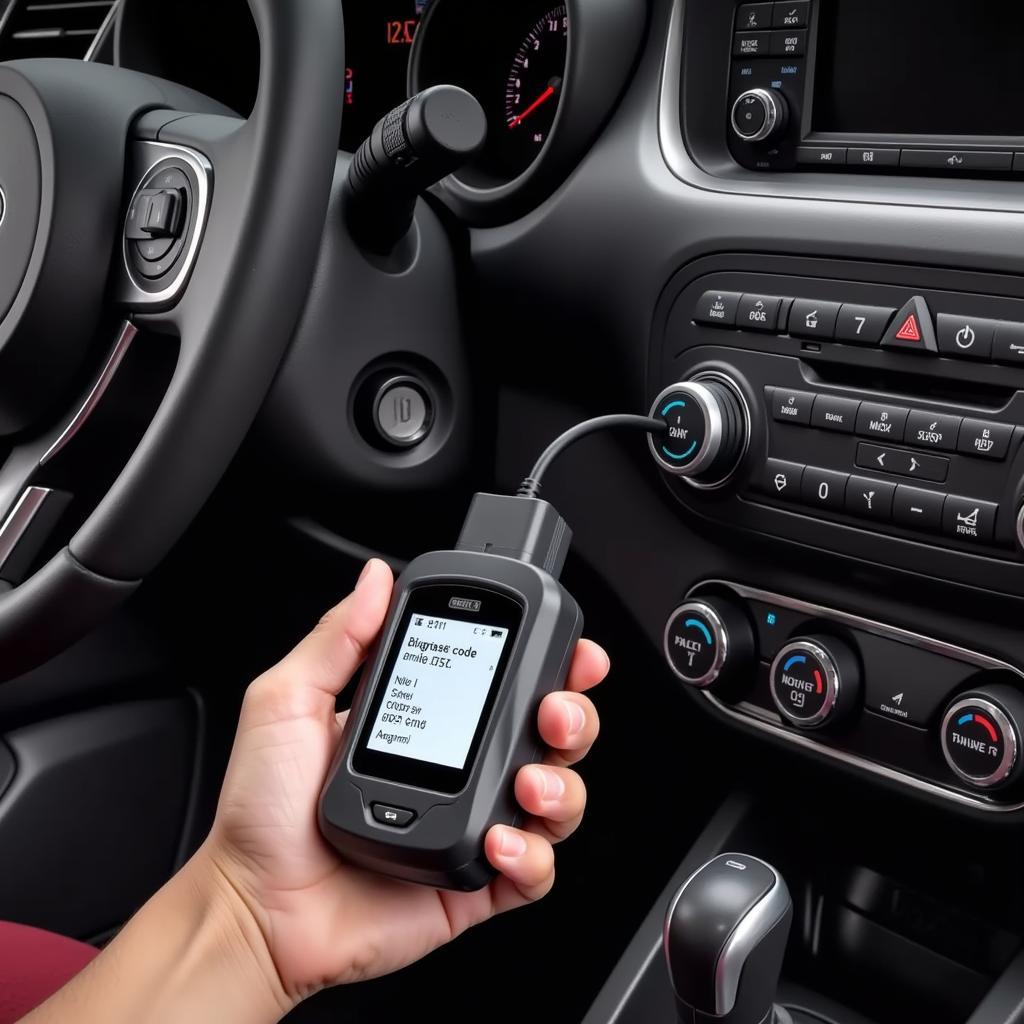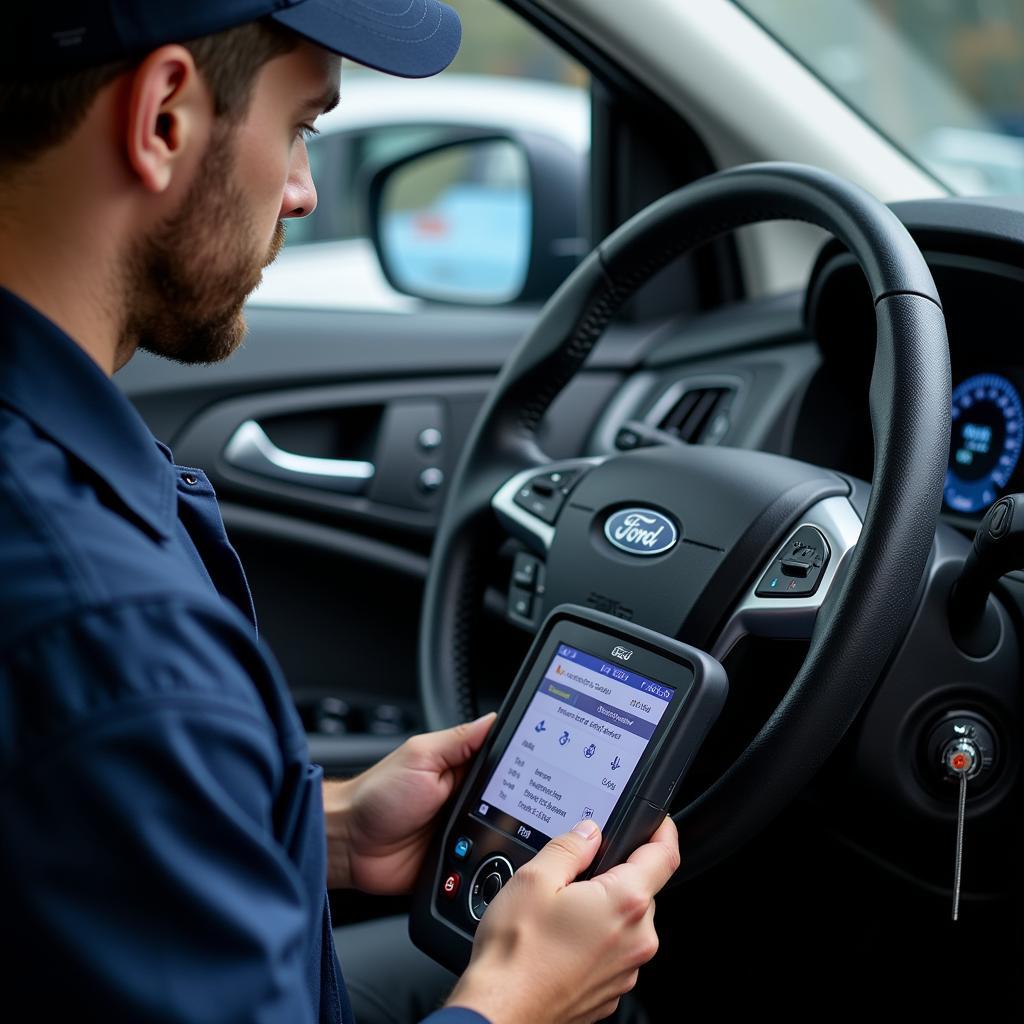When it comes to maintaining your BMW’s sophisticated systems, understanding the role of calibration is crucial. One such system is the Steering Angle Sensor (SAS), responsible for determining your steering wheel’s position and relaying that information to vital systems like the Dynamic Stability Control (DSC) and Electronic Brake-force Distribution (EBD). When your BMW SAS throws a fault code or displays erratic behavior, calibration often emerges as the solution. But this begs the question: do you absolutely need a specialized scan tool for the job? Let’s delve into the intricacies of BMW SAS calibration and shed light on the tools you need.
Understanding BMW SAS Calibration
Imagine your steering wheel as the conductor of an orchestra, guiding the wheels and ensuring a harmonious driving experience. The SAS acts as the intermediary, translating the steering wheel’s position into electrical signals that the vehicle’s electronic brain can understand. This data is critical for various safety and performance features to function correctly.
Now, calibration is akin to fine-tuning the orchestra. It involves resetting the SAS to its zero point, ensuring it accurately communicates the steering angle to other systems. This process is often necessary after wheel alignment, suspension work, or even a simple battery disconnect.
 BMW SAS Calibration Process
BMW SAS Calibration Process
The Indispensable Role of a Scan Tool
While some vehicles might offer rudimentary calibration procedures without a scan tool, BMWs generally require a more sophisticated approach. This is where a dedicated scan tool becomes indispensable. Here’s why:
- Accessing the BMW’s Electronic Control Unit (ECU): The ECU is the brain of your BMW, and a scan tool acts as the communicator, allowing you to access and manipulate the SAS settings.
- Performing Specific Calibration Routines: BMW SAS calibration involves specific procedures, often requiring the input of precise values and the execution of commands. A scan tool provides the interface to perform these routines effectively.
- Clearing Fault Codes: Post-calibration, it’s crucial to clear any lingering fault codes stored in the ECU. A scan tool enables you to erase these codes, ensuring the system operates with a clean slate.
- Verifying Calibration Success: How can you be sure the calibration was successful? A good scan tool will allow you to read live data from the SAS, confirming that it’s reporting the correct steering angle.
 BMW Scan Tool Features
BMW Scan Tool Features
Choosing the Right Scan Tool for BMW SAS Calibration
Not all scan tools are created equal, and selecting one that aligns with your needs is paramount. When searching for a scan tool to calibrate your BMW SAS, consider the following factors:
- BMW Compatibility: Ensure the scan tool explicitly states its compatibility with your specific BMW model and year.
- SAS Calibration Functionality: Verify that the tool offers dedicated SAS calibration procedures, not just generic code reading capabilities.
- User-Friendliness: Opt for a tool with an intuitive interface and clear instructions, especially if you’re new to DIY car maintenance.
- Additional Features: Some scan tools come equipped with extra features like live data streaming, graphing capabilities, and access to other vehicle modules, adding value beyond SAS calibration.
Investing in a reliable scan tool empowers you to take charge of your BMW’s maintenance, potentially saving you costly trips to the mechanic for routine procedures like SAS calibration.
FAQs: BMW SAS Calibration and Scan Tools
1. Can I calibrate my BMW SAS without a scan tool?
While some older BMW models might offer rudimentary reset procedures, modern BMWs generally require a scan tool for accurate SAS calibration.
2. What happens if I don’t calibrate my BMW SAS after an alignment?
Failing to calibrate the SAS can lead to inconsistencies between the steering wheel’s position and what the car’s computer believes, potentially affecting stability control systems and overall handling.
3. How often should I calibrate my BMW SAS?
It’s recommended to calibrate the SAS after any work affecting the steering or suspension geometry, such as wheel alignments, suspension component replacements, or even a simple battery disconnect.
4. Are there any risks associated with SAS calibration?
When performed correctly using a compatible scan tool and following the proper procedures, SAS calibration poses minimal risks. However, incorrect calibration can lead to handling issues, so careful execution is crucial.
5. Can I use a generic OBD-II scanner for BMW SAS calibration?
Generic OBD-II scanners might read fault codes, but they often lack the specific software and capabilities required for comprehensive BMW SAS calibration. Investing in a dedicated BMW scan tool is generally recommended.
Need Expert Assistance with Your BMW SAS?
Navigating the intricacies of BMW electronics can be daunting. If you’re unsure about calibrating your BMW SAS or have any concerns, don’t hesitate to seek professional assistance.
Contact us today via WhatsApp at +1(641)206-8880, email us at cardiagtechworkshop@gmail.com, or visit us at 276 Reock St, City of Orange, NJ 07050, United States. Our team of expert technicians is available 24/7 to provide top-rated support and guidance for all your BMW diagnostic and maintenance needs.


